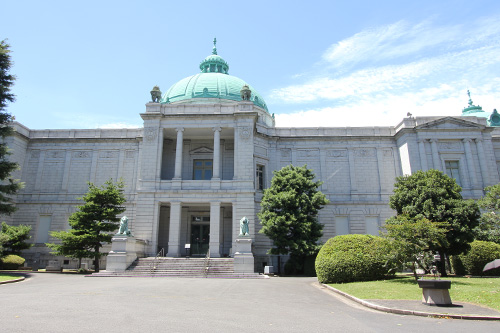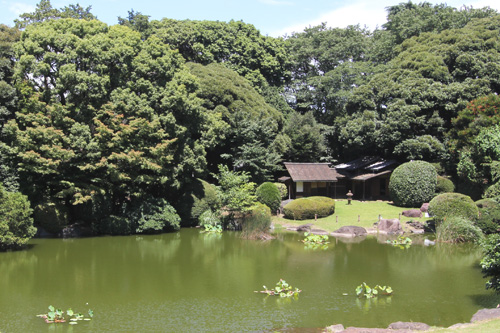Buildings
- Published 2015.8.17
Tokyo National Museum Buildings

Honkan (Japanese Gallery): The Honkan Japanese Gallery was opened in 1938, and the present Honkan building was designed by Watanabe Jin in the "Imperial Crown" style. It includes an Exhibit on the 2nd floor, "Highlights of Japanese Art", and contains 1st floor galleries organized by genre.

Toyokan (Asian Gallery): The Toyokan Asian Gallery was designed by Taniguchi Yoshiro and was built in 1968 and reopened in January 2013 after refurbishment. The gallery features art and artifacts from regions including China, Korea, Southeast Asia, Central Asia, India, and Egypt.
Heiseikan (Japanese Archaeology and Special Exhibitions): The Heiseikan, Gallery of Japanese Archaeology and Special Exhibitions was opened in 1999 to commemorate the crown prince`s marriage. Large-scale special exhibitions are usually held on 2nd floor while the Japanese Archaeology Gallery on 1st floor introduces Japan`s ancient cultures. The Japanese Archaeology Gallery is temporarily closed and is scheduled to reopen on October 14th, 2015.
Horyu-ji Homotsukan (Gallery of Horyuji Treasures): This gallery was designed by Taniguchi Yoshio and opened in 1999. It houses the Horyuji Treasures which consist of over 300 objects, mainly from 7th and 8th centuries which were donated to Imperial Family by Horyuji temple in 1878. The reference room on the 2nd floor mezzanine houses the "digital archive" which allows visitors to view the entire collection of Horyuji Treasures on computer with explanations provided in Japanese, Korean, Chinese, English, French, and German. This gallery is temporarily closed from May 20th, 2015 to March 14th, 2016.

Hyokeikan: The Hyokeikan was completed in 1909 in celebration of the wedding of the then Crown Prince and later Taisho Emperor. The building design is a representative example of Western-style architecture of the late Meiji era (early 20th century). The Hyokeikan only opens for events and temporary exhibitions and is currently closed.
Kuroda Memorial Hall: The hall was designed by Okada Shin`ichiro and completed in 1928 to fulfill will of Kuroda Seiki (1877-1924), influential Western-style painter. It later underwent earthquake strengthening construction and reopened in January 2015. Kuroda`s artworks displayed in two exhibition rooms: Kuroda Memorial Room and the Collection Highlights Gallery.

Museum Garden and Teahouses: The area is open to the public during the cherry blossom season in spring and in the autumn and contains five historic teahouses within the garden. The teahouses are named, Kujokan, Okyokan, Rokusoan, Tengoan, and Shunsoro.
Kuromon (Black gate): The gate was the main gate from the former Edo (present-day Tokyo) residence of the Ikeda family, feudal lords of Tottori domain. The residence was located in present-day Marunouchi
Research and Information Center: The Research and Information center was established in 1984 mainly for scholarly use. It deals with various documents related to archaeological objects, fine art, applied arts, and historic materials of Asia and the Middle East, with a special emphasis on Japan`s legacy. Visitors may browse through books, magazines, and large-format art books on the open stacks as well as monochrome and color photographs in the photo cabinets.
